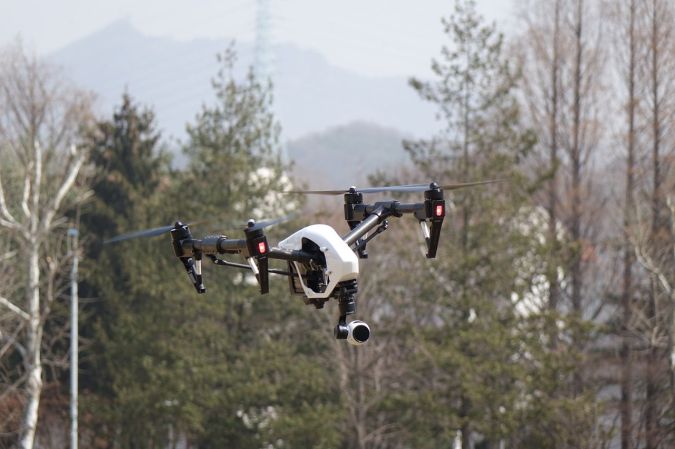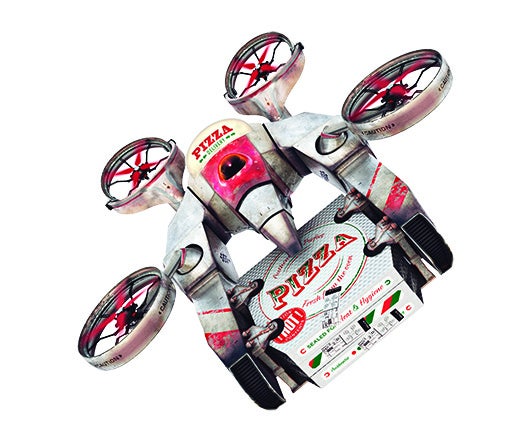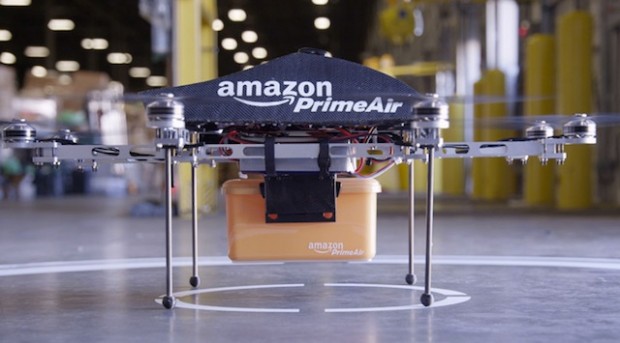

Wing, the drone delivery division of Google-parent-company Alphabet, announced on Monday that it will launch its first US commercial service on April 7 in the Dallas-Fort Worth metro area. It’s starting small, initially serving “tens of thousands of homes” in two suburbs: the City of Frisco and Town of Little Elm.
This is a first, with a few caveats. Wing has both operated in the US—it tested its service in both Virginia and the same Dallas-Fort Worth suburbs—and operated a commercial service in Australia and Finland. Still, this is the first time that regular US consumers will be able to order an item via drone delivery with a tap in an app.
Wing will offer products from a limited number of stores to start. It partnered with Walgreens for its initial testing in Frisco and Little Elm, so customers will be able to order a selection of health and wellness products. For the commercial service, it’s also announced prescription pet medications from Easyvet, first aid kits from Texas Health, and ice cream from Blue Bell Creameries. So yes, ice cream arriving from the sky (sky-ce cream?) is a real thing in the United States in 2022.
Rather than using one central base, Wing has placed what it calls “nests” of drones next to participating stores. It says that in the future, these can be deployed in parking lots, adjacent empty space, and even on rooftops. When an order comes in, employees at the participating store pack the items into a special cardboard box then load it onto a delivery drone. Wing then takes over the operation of the drone, managing the flight to the customer’s home, where it will hover at around 23 feet. It then lowers the package on a tether, automatically releasing it on the ground before flying back to its base to recharge. According to Wing, the customer doesn’t have to do anything.

Wing’s drones are pretty impressive. They have both hover motors and cruise motors. The hover motors enable it to take off and land vertically, as well as hover in place so it can load and unload packages. The cruise motors, along with a fixed wing, allow it to fly at up to 65 mph, giving it a six-mile range and, assuming there are no delays, a six-minute delivery time.
To avoid air traffic control requirements, the drones stay low, flying at under 400 feet—and generally less than 150 feet. Wing’s software takes weather and other drones into account when plotting a safe route to the delivery zone. Apparently, they fly autonomously but are supervised by trained pilots. Presumably, Wing is keeping the exact operational details hushed up for commercial reasons.
The drones were built with food delivery in mind. They are designed to stay stable during all stages of flight, even when they’re taking off or delivering the package. Each drone has a payload capacity of less than three pounds. For context, should Wing partner with McDonalds in the future, that would be enough for six Big Macs, though if you sprung for a meal, the drink is going to take up quite a bit of potential food capacity. In other words, don’t expect a drone like this to be delivering oodles of stuff.
And while all this is exciting, it’s worth stepping back and considering the viability of drone deliveries as a whole. Amazon has gutted its UK-based Prime Air division, while UberEats has kept quiet about its drone plans since they were announced in 2019. As much as Wing trumpets the commercial nature of its delivery service (200,000 total deliveries as of March this year), commercial doesn’t necessarily mean profitable. Without its parent company’s deep pockets, Wing’s drones clearly wouldn’t be viable—especially as it will offer free delivery to customers in Frisco and Little Elm.
The only US drone delivery service that appears to be doing more than viability testing is Zipline. It has also completed more than 200,000 commercial deliveries, but of medical supplies to US, Rwandan, Ghanaian, and Nigerian hospitals. It raised $250M in funding last year, valuing the company at $2.75 billion.
And in other drone news, FedEx recently partnered with a company called Elroy Air that makes a very large drone, but FedEx’s intention is not to use them for deliveries, but instead, “middle mile” logistics.
Wing’s deliveries are slated to begin tomorrow, but what the skies actually hold for this kind of service remains to be seen. But, there are more than 7 million people in the Dallas-Fort Worth metro area, so if the nest model takes off, it could expand to many potential customers pretty quickly.




![Quadcopter Launches ScanEagle Drones From Its Belly, Catches Them In Mid-Air [Video]](https://www.popsci.com/wp-content/uploads/2019/03/18/LXBRQBN53TRDA3JTAUXMSNU2MQ.png?w=591)















